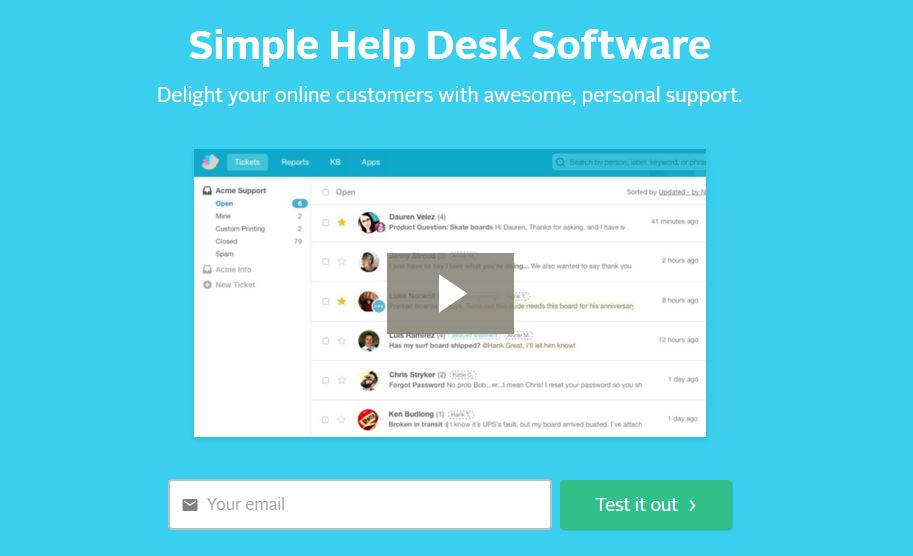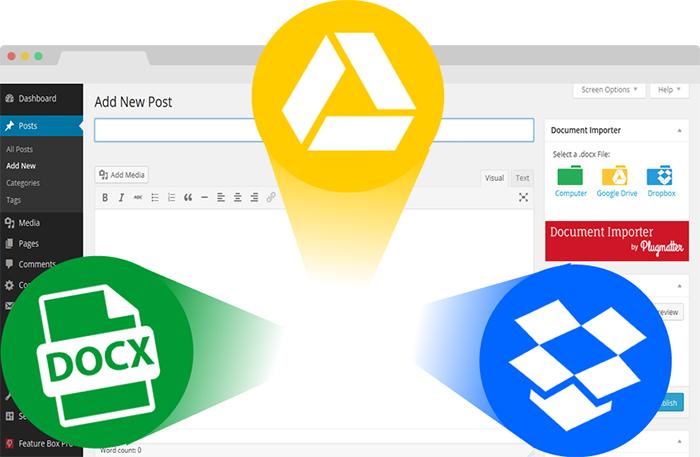“We believe that customer service shouldn’t be just a department; it should be the entire company.” – Tony Hsieh
We at Plugmatter have always strived to be a company that keeps our customers thoroughly satisfied with our products.
Sure, we’ve had hiccups. We’ve slipped. And regretfully so.
But we always got back up, ensuring that we go the extra mile to help our customers. To keep the line of communication open. To know and provide for their requirements.
We’re still learning – and more importantly – we’re willing to learn how to help our customers better. That they’ve voted on our product with their money, makes it worth the learning curve.

We want others to benefit from our experiences with handling support over the past two years. And I’m happy to share them with you in this article!
Truth be told, when we started Plugmatter, we weren’t ready for the number of customers we ended up attracting. The numbers were beyond our expectations.
The thing was, we launched a product that promised optin box templates that were top of the line.
But we hadn’t yet made them responsive.
That was a huge oversight. Within the first few support tickets itself, it was loudly evident that we’d made a huge mistake. We had to make them responsive, ASAP.
Fortunately, thanks to our brilliant team, we did. But why did we underestimate support in the first place?
Well, we are from a SaaS background. RapidFeeds, our first product, has been running for 10 years now, having close to 75,000 users.
And with RapidFeeds, we receive only about 10-15 tickets per month. And that’s exactly what we expected from plugin as well.
Managing support for a WordPress plugin was entirely different from doing it for a SaaS.
Anyway, here are some fundamental differences we learned in providing support for a WordPress plugin, as opposed to a SaaS product –
Customer support is a serious matter, regardless of the industry you’re in.
Whether you’re a blogger selling an online video course, or a SaaS product, or a WordPress plugin like us – give it your all.
One way to ease this is to start using a suitable customer support tool, as quickly as possible.
We learned the importance of using a tool, the hard way. Initially we managed our support from our Gmail. And as may have already guessed, it was a mess.
We never had a track of our customers, were unable to templatize our work properly, had to hop onto database to view customer details and what not.
And to fix that we finally decided on Groove, after hopping through a few other tools though.
Groove is one of the most affordable yet feature-rich customer support tools available out there. We’ve been using it for close to 20 months, and it’s been a smooth ride so far.
However, before using Groove, we used the free version of HelpScout. But in just a couple of months, we moved from the free version of HelpScout, to the paid version of Groove.
Why?
Well, Groove’s pricing is very simple.
As a startup, we couldn’t afford much then. And Groove happened to offer us everything we needed – all their incredible features – for just $15.00 per month.
HelpScout on the other hand restricted many features, for their lowest package, and charged more per user.
Also with Groove, you get to see detailed reports of your performance. You can know things like average reply time, average handling time and the number of customers who gave us an ‘awesome’ rating for our support, among other things.
It helps us be on top of our support game.
One of the first features we explored on Groove was the Knowledge Base. Although it did reduce our support tickets to a certain extent, it didn’t bring about too significant a change.
Most customers that we dealt with had a unique concern. A concern that couldn’t be made a part of the Knowledge Base.
A couple of examples are:
Before updating the Knowledge Base, we were getting around 20 queries per day; and updating didn’t quite move the needle. We were still getting around 18-20 queries per day.
Most people directly want to contact a support assistant as soon as they need any assistance.
Here’s what I can say after 3000+ customer support queries – support can either make or break a significant part of your business.
Out of every 100 sales we make, we get around 27-35 customer support queries. If we didn’t resolve their support tickets on time, it’s like we were risking over 1/3rd of our business.
Not to mention the opportunity cost of potentially losing brand loyalists, and evangelists.
In short, it’s a risk that no business can afford.
If your customers can buy your product over weekends, they expect you to provide support over weekends too.
You need to provide customer support service over the weekend as well. That’s something we’ve had to learn the hard way – after many a refund was issued.
Doing so has definitely made customers happier, now that their issues can get solved immediately, instead of waiting till a Monday.
We spend lesser time on the weekends for support than on a weekday, but we manage to give it enough time for urgent queries to be solved.
Where can you get the best ideas for feature development for your products?
From the customers.
They will tell you exactly what they want in their support requests. And those desired functionalities can become a useful feature for all your customers.
For example, take our Document Importer plugin.
It is being used by hundreds of users – by bloggers, by academicians, etc. to import their content to WordPress, without losing its formatting.

There were many feature requests that we received from our customers. The recent additions, the multiple document import feature and Dropbox automation, were the result of such customer requests, that were asked by many users.
With our Feature Box plugin, it was the “Google Events Tracking” feature.
The bottom line is – customers are the best to learn from about adding new features.
Customer experience begins from the point someone thinks of buying your product.

Customer experience is not like a quick sprint. It’s a marathon that takes time and effort. To understand users. To assess their behaviour.
Changing processes, systems – even entire products at times – to be able to reach a point where you have a loyal customer base, will take time.
It’s a relationship – like any other relationship – that takes time to build. However, once built – you’ll love it.
Here’re a couple of insights:
From our experience, those customers who have their support queries resolved quickly, are the happiest of all.
We may delay it for just a bit because we’d be required to login to our customer’s website to fix the issue, but they understand that it’s necessary.
A few tips to ensure provide speedy resolution to the customers:
It is critical to track and measure your customer support performance. It’d ultimately result in a better product, and in a better business.
Groove offers few very promising customer support metrics, including:
Some customers, regardless of how good your product or support services are, will ask for a refund.

For customers like these, you simply have to provide the refund.
Having said that, there’s one thing that you can do to avoid refund requests of this kind. Most people who ask for it, do so in the first 24-48 hours of purchasing the product.
Meaning, their first experience with the product wasn’t as good they expected.
To avoid that situation, make an extra effort to ensure users have an amazing first-experience with your product absolutely no glitches and bugs.
Issuing refunds can be a time consuming process. We made the mistake of issuing refunds manually for the first 6 months, after launching the Feature Box plugin.
Once it took me and Akram, my business partner, around 5 hours to issue a single refund after going through a series of steps. That’s when we decided it had to be automated.

The current process looks like this:
Almost 90% of our customers receive their refund within 24-36 hours of them requesting for it.
Apart from the that, there are few minor automation steps that helped us to a great extent. A simple “user information” section that we were able to create on Groove saved a significant amount of time as we were able to see critical user details such as the plugin he is using, his license key, user id, etc.
Something similar to the below:
To conclude, customer Support for WordPress plugins is not very different from support in any other line of business.
Be sure that before you push an update, you test your updates on multiple versions of WordPress to ensure smoother functionality of the plugins.
Don’t forget to track and measure your performance and use a tool that perfectly fits your requirement. Groove did the job for us.
Get weekly actionable tips, insights and case studies to maximize your results.